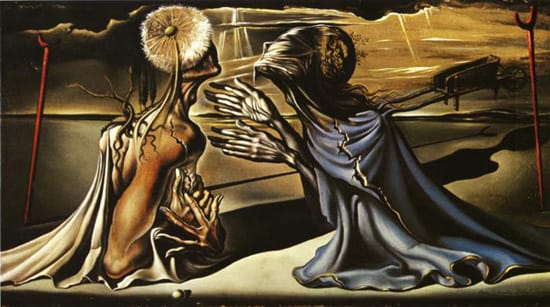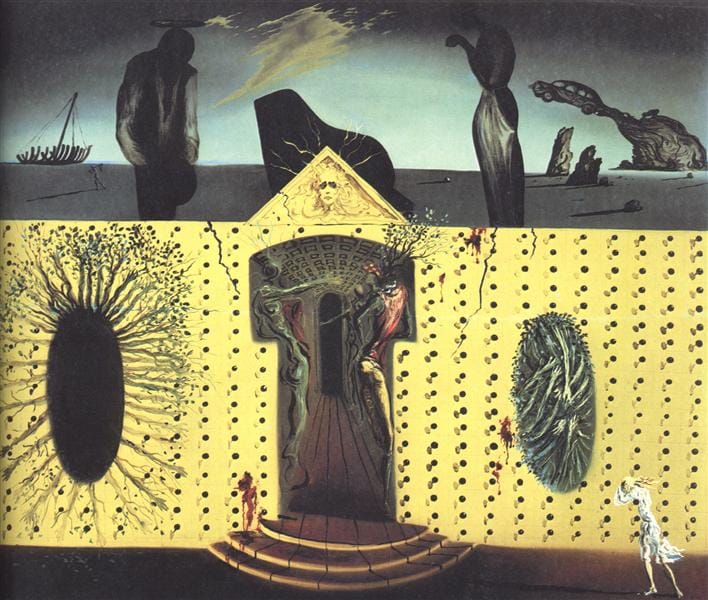Dalí's 'Tristan and Isolde'

Leave it to a Spanish painter (or Catalan) to return the favor and spell out what he really thought of the gloomy Tristan and Isolde myth - Salvador Dalí's satirical Tristan and Isolde. This painting began life as a small oil painting back in 1936-38, but it was then enlarged into a massive backdrop for the a scene in the ballet, Mad Tristan (Tristan Fou), set to Wagner's score. Production and performance were delayed until 1944 because of the war and it was finally put on by New York's Metropolitan Opera. Hilariously, it was subtitled “the first paranoiac ballet based on the eternal myth of love in death.” The ballet, by Russian choreographer Leonide Massine, was the third and final collaboration between Dalí and Massine. Apparently, the backdrop was rediscovered in 2009 in the Met's prop storage, sold to and restored by a private European art collection. Below is Mad Tristan, another of Dalí's attempts to grapple with the myth. There are others and they can be viewed at Fundació Gala-Salvador Dalí, Figueres, Catalonia (or Spain, if you prefer).

Back in 1929, when Buñuel and Dali unleashed Un Chien Andalou on Parisian audiences, they took great delight in playing the Liebestod, the finale to Wagner's opera, on a phonograph in the theater. In later decades, when film prints of Un Chien Andalou were made available, Buñuel included the Liebestod again on the soundtrack.
In recent decades, Wagner has been criticized for ruining opera with all this religiosity - whereby audiences are obliged to worship his operas (indeed all operas) in silence and without moving from their seats as if they are in church. Now the same thing is ruining the movie experience, which has pretty much gone the way of the opera.
